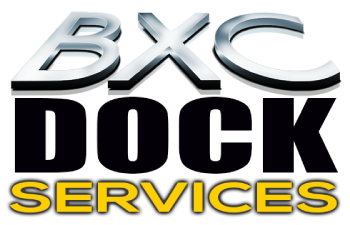Lifting heavy materials manually or using outdated equipment isn’t just inefficient—it’s dangerous. That’s why more warehouses are turning to hydraulic scissors lifts as part of their daily operations. These lifts don’t just move products—they help protect your workers and speed up your workflow.
Let’s break down why a hydraulic lift for loading docks is more than just a tool—it’s a smart move for safety and productivity.
What Exactly Is a Hydraulic Scissors Lift?
A hydraulic scissors lift is a powered platform that moves up and down using linked, folding supports in a crisscross pattern—aka, the scissor mechanism. It’s commonly used in warehouses, loading docks, and manufacturing plants to raise pallets, equipment, or even people to various heights.
These lifts are workhorses. They offer strong load capacity, smooth elevation, and precise positioning—all essential for busy dock operations.
-
Boosting Safety on the Job
One of the biggest hydraulic scissors lift benefits is accident prevention. Back injuries, dropped loads, and awkward lifting are all too common in material handling jobs. A scissor lift lets workers load and unload items at an ideal height, reducing strain on their backs and knees.
In short, it helps you protect your most important asset—your team.
Plus: Scissor lifts eliminate the need for ladders or makeshift lifting setups, which are major causes of workplace accidents.
-
Improving Productivity Without Cutting Corners
Tired of wasting time adjusting to different trailer heights or moving materials by hand? Hydraulic lifts make loading and unloading a whole lot faster. You can bring items up to the right level with the press of a button.
Fewer delays. Fewer injuries. Faster operations.
When properly maintained, these lifts work smoothly all day long. That’s where Loading Dock lifts repair comes in—keeping things running without breakdowns or drama.
-
Perfect Fit for Loading Dock Environments
In dock areas, flexibility is key. Not every truck is the same height. Not every load is the same size. A hydraulic lift for loading docks bridges the gap, helping you maintain a level transfer surface regardless of what rolls in.
They’re also compact, which saves valuable floor space. Many models even come with safety features like guardrails and anti-slip platforms.
Pair that with planned maintenance services, and your dock stays in top shape—without the stress.
-
Supporting Material Handling Safety Solutions
Warehouse managers are constantly looking for ways to reduce injuries and meet OSHA standards. Scissors lifts check a lot of boxes in that department.
- Controlled elevation: Reduces sudden drops and mechanical shocks.
- Stability: Designed to hold steady, even with heavy or uneven loads.
- Accessibility: Makes reaching high storage areas or truck beds easier and safer.
Combined with Loading Dock lifts repair services, these features help create an all-around safer work environment.
-
Maintenance Makes All the Difference
Even the best equipment needs a little TLC. Hydraulic lifts deal with pressure, weight, and constant motion. Over time, parts wear out or get misaligned.
That’s where BXC Dock Services steps in. Our licensed pros handle Loading Dock lifts repair fast and right the first time. We use original manufacturer parts and carry a full inventory—so most fixes are done on the first visit.
And if your lift’s seen better days? We also offer retrofit kits and custom hydraulic solutions to bring it back to life.
Frequently Asked Questions
Q1: How often should I service my hydraulic scissor lift?
Every 3–6 months is recommended, depending on usage frequency and load weight.
Q2: What are the signs my lift needs repair?
If it’s moving slowly, making strange noises, or not leveling correctly—it’s time to call in a pro.
Q3: Can BXC repair any brand of hydraulic lifts?
Yes, we service most major brands and carry parts for common makes and models.
Let’s Keep Your Lift, and Your Team, Running Strong
Hydraulic lifts are one of the best material handling safety solutions you can invest in. But they only work as hard as you maintain them. Trust BXC Dock Services to keep your equipment running safely and smoothly with expert Loading Dock lifts repair and routine care.
Call (786) 554-8077 now for a free estimate, and ask about our 10% discount for new customers. Better lifts. Safer docks. Faster operations. Let’s make it happen.








